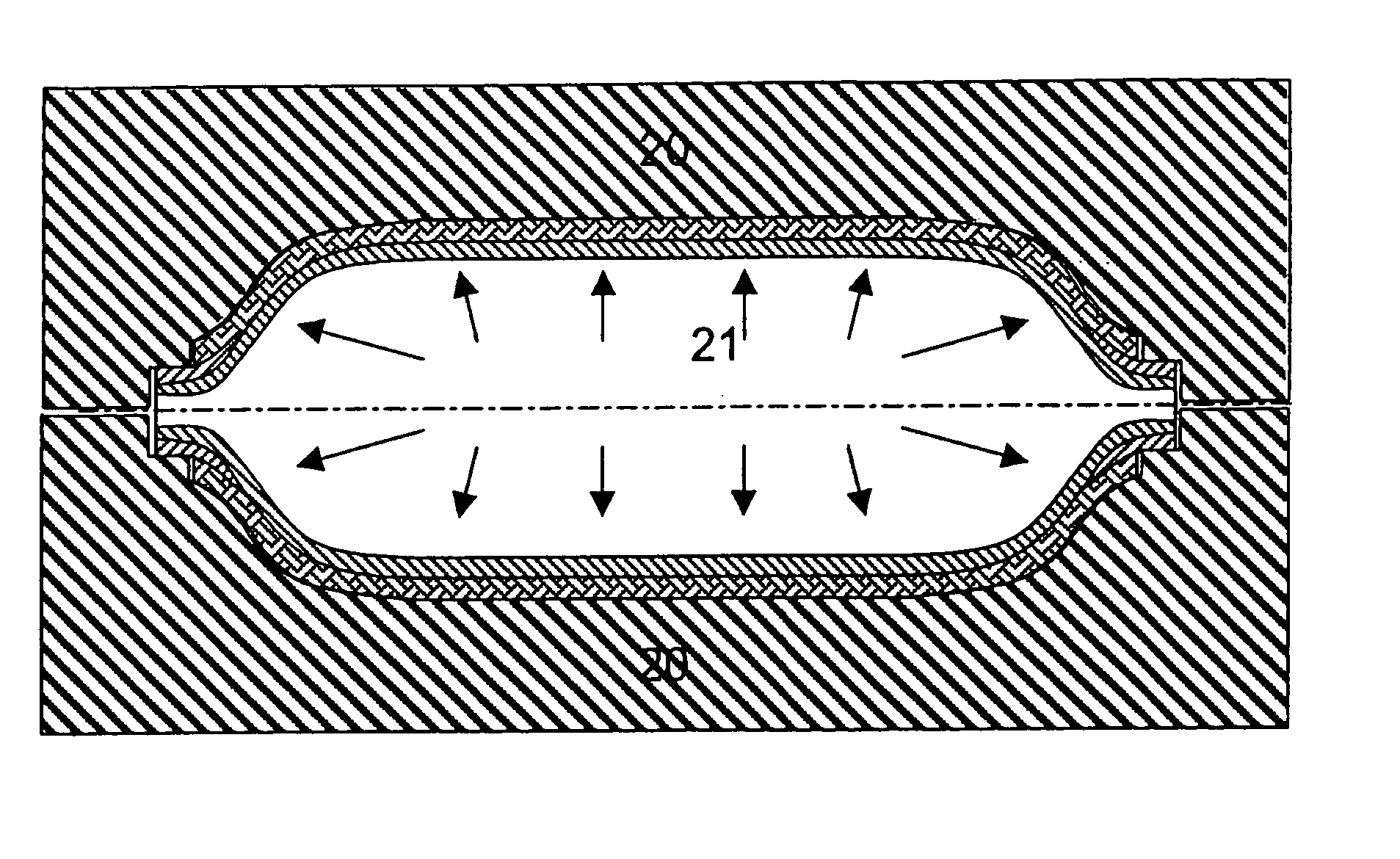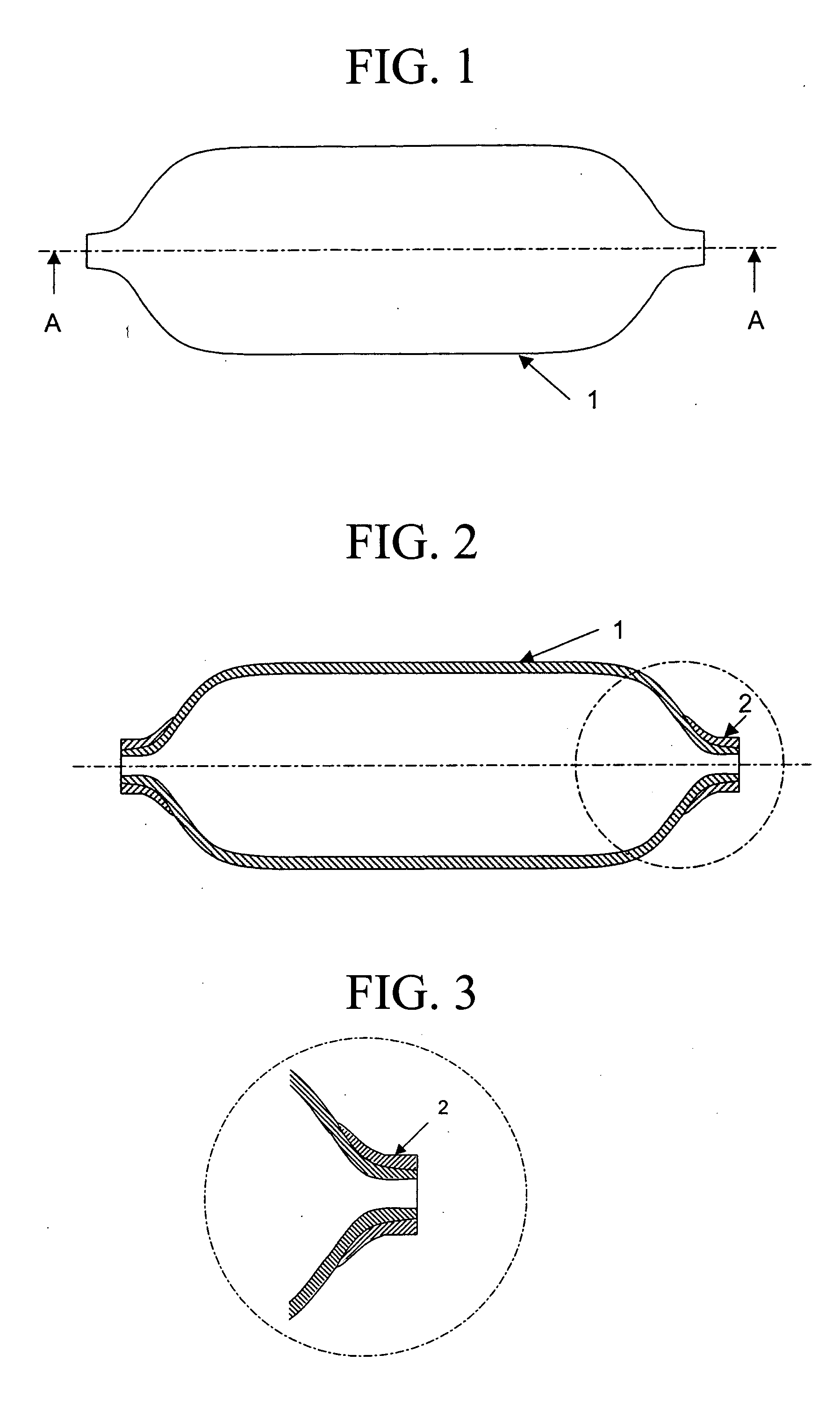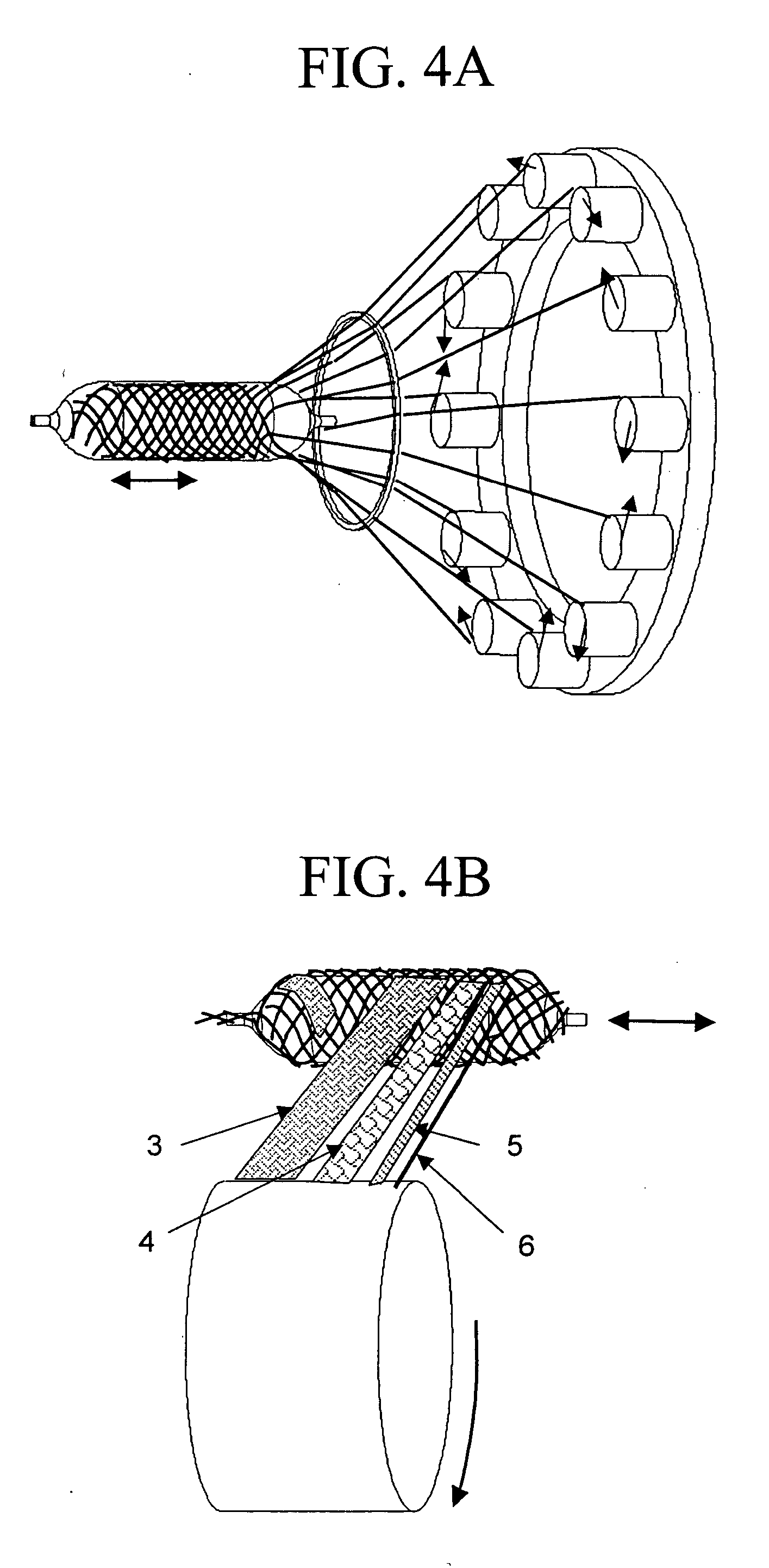Hence high
processing speeds, notably the application of the thermoplastic matrix based reinforcement to the mandrel, creates a limit on the speed of the process and hence the
cycle time.
High drag or friction forces induced by the placement of thermoplastic matrix based reinforcement create further quality problems whereby segregation of the thermoplastic matrix and reinforcing fibres may occur, creating an unfavourable
microstructure.
Additionally, the geometry of the component is limited where there is a need to remove the mandrel after
processing.
The sequential application of composite
layers to the mandrel is known to create high internal stresses in the component, affecting dimensional stability and the eventual durability of the component.
The process
cycle time depends on the winding speed and hence this creates a limit on the speed of the process and thereby the
cycle time.
High drag or friction forces induced by the placement of thermoset matrix based reinforcement create further quality problems whereby segregation of the thermosetting matrix and reinforcing fibres may occur, creating an unfavourable
microstructure.
Additionally, the geometry of the component is limited where there is a need to remove the mandrel after
processing.
The cycle time is limited by the need to inject the resin into this space, where pressures are limited where a permanent hollow mandrel is used such that the pressure of the incoming fluid, here the activated resin, does not distort the geometry of the mandrel, hence limiting processes to lower rate and
pressure injection rather than the shorter cycle time,
high pressure process of structural reaction
injection moulding.
Furthermore, the cure reaction of the thermoset matrix either limits the cycle time or, where tailored to occur at a higher speed, induces high stresses in the composite.
Where the mandrel needs to be removed, expensive technologies, such as low
melting temperature alloys, must be used where part geometries are not to be impaired.
The cycle time is limited by the need to inject the resin into this space, where pressures are limited where a permanent hollow mandrel is used such that the pressure of the incoming fluid, here the activated resin, does not distort the geometry of the mandrel, hence limiting processes to lower rate and
pressure injection rather than the shorter cycle time,
high pressure process of structural reaction
injection moulding.
Furthermore, the polymerisation reaction of the
monomer either limits the cycle time or, where tailored to occur at a higher speed, places limitations on bladder materials.
Where the mandrel needs to be removed, expensive technologies, such as low
melting temperature alloys, must be used where part geometries are not to be impaired.
for the bladder assisted moulding process, for the case of thermoset based reinforced material, the need to cure the thermoset matrix material creates problems with
chemical attack with rubber-like bladder materials, typically
styrene with
silicon rubbers, and hence bladder life is reduced.
Bladder materials are generally removable due to the difficulty of achieving a bladder that is flexible enough to enable compaction of the impregnated reinforcing fibres prior and during cure while forming a reliable bond between the bladder and cured composite with the lack of high internal stresses in the finished component.
Cycling the mould temperature is energy inefficient and
time consuming, limiting the potential to reduce cycle times, and the fabrication of heated bladder systems is uneconomic for components made in large quantities while also being fragile and of limited
life span.
The currently available techniques outlined above have inherent limitations that reduce the potential of the process for applications where a minimum cycle time is required.
Heating the (often metallic) outer mould is both
time consuming and requires large amounts of energy.
The use of embedded electrical heaters in a
silicon rubber bladder creates a bladder
system that is both fragile and difficult to extract from the cooled hollow
composite structure or vessel, thereby limiting the geometry of applications.
Furthermore, at the higher processing temperatures required for certain thermoplastics, for example PA12 and PET, the
life span of the often costly
silicon rubber bladders is limited.
Where the outer
layers of the thermoplastic composite are not heated sufficiently above the melting temperature of the thermoplastic matrix, inadequate impregnation occurs, and hence an unfavourable set of mechanical properties results and surface quality is diminished.
Thermosetting materials have additional disadvantages compared with thermoplastic based materials, notably for higher rate production, whereby a limited temperature capability results, unsatisfactory finished product aesthetics, lack of extended durability, lack of appropriateness for recycling and manufacturing related issues such as
downtime due to clean-up and
material handling costs and sub-ambient storage.
Further, there are environmental concerns arising from worker
exposure to vapour, overspray, emissions, etc., encountered during the fabrication process.
Some engineered thermoset resins improve material performance through higher temperature capacity, but unacceptable material costs are associated with them.
Thermoplastic based materials have overcome many of the above problems but the processing techniques available are limited in cycle time due to complex heating and cooling cycles, either of the mould or of expensive and fragile bladder materials and bladders based assemblies with a heating ability.
Additionally,
high energy costs are associated with processes that require a
cycling of the mould temperature above and below the matrix melting temperature or complex bladder based heating systems.
 Login to View More
Login to View More 


